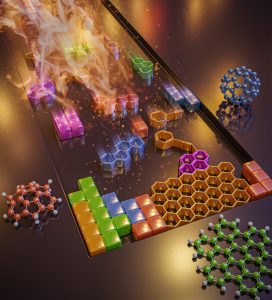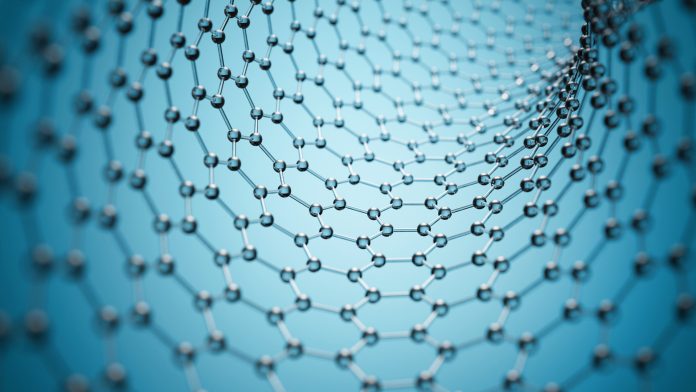A universal reaction mechanism, proposed by KAUST scientists, could explain the formation of carbon nanoparticles in interstellar and terrestrial environments.
Carbon nanostructures that are formed in circumstellar envelopes around carbon-rich stars may have a shared chemical origin with soot particles produced by fuel combustion. Researchers at the King Abdullah University of Science and Technology (KAUST) have demonstrated that the same universal reaction mechanism could in fact underpin each process. The proposed mechanism could also lead to improved methods for carbon nanomaterial manufacture.
What are polycyclic aromatic hydrocarbons?
Carbon-rich nanoparticle formation — whether interstellar or combustive— is thought to rely on compounds called polycyclic aromatic hydrocarbons (PAHs), which are akin to clusters of fused benzene rings that are held together by shared carbon-carbon pi-bonds. Several mechanisms have been proposed to explain how PAHs could combine with other carbon molecules to grow into soot and related carbon nanoparticles.
“All these studies, however, are insufficient to explain the inception of ‘peri-condensed aromatic hydrocarbons’ with only pi-bonds between carbon atoms, which can be present in large amounts in flames,” explained Hanfeng Jin, who led the research. “We have proposed a new mechanism that explains the nucleation of peri-condensed aromatic hydrocarbons.”

KAUST scientists have proposed a new mechanism that explains how carbon structures in flames and stars can come together to form nanoparticles.© 2022 KAUST; Hassan Tahini.
Hydrogen abstraction phenylacetylene addition (HAPaA) mechanism
The team demonstrated that peri-condensed aromatic hydrocarbon nucleation could be explained by reactions between aromatic aryl molecules and phenylacetylene, via a hydrogen abstraction phenylacetylene addition (HAPaA) mechanism. “Phenylacetylene is easily formed and can be present in considerable amounts in flames,” Jin explained. Both benzene and acetylene, phenylacetylene’s precursors, are known to be crucial intermediates in astrochemistry and combustion chemistry.
The research team utilised quantum chemical calculations to show that peri-condensed aromatic hydrocarbons can grow by phenylacetylene addition to ‘zigzag-’ and ‘armchair-’ shaped structures around the aryl molecule periphery. The initial step of the HAPaA mechanism has no energy barrier, so is equally applicable to both low-temperature interstellar chemistry and high-temperature combustion.
Utilising the HAPaA reaction mechanism
The HAPaA mechanism was also applicable to larger molecular analogues of phenylacetylene, enabling repeated cycles of PAH clustering toward carbonaceous nanoparticle formation.
“The beauty of our proposed mechanism, compared to the traditional pathways of PAH formation and growth, is that it is universally applicable,” Farooq concluded.
“This mechanistic understanding would help us limit the formation of soot particles from combustion systems, for example, by using chemical compounds that suppress zigzag and armchair peripheries, which increase the efficiency of the HAPaA mechanism. Similarly, our proposed mechanism can also be used to increase the fidelity of models utilised for predicting the evolution of carbon in the interstellar media.”









